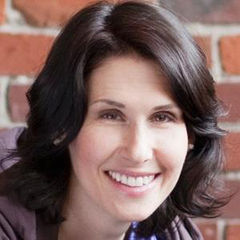
While most personal trainers, group fitness instructors and health coaches would describe themselves as caring professionals who are in tune with what their clients need to succeed, they might lack firsthand experience about how it really feels to consistently struggle with dieting and weight loss. In many cases, getting and staying in shape may come more naturally to a lot of health and exercise pros compared to the general population, where 71.6% of U.S. adults over age 20 qualify as being affected by overweight or obesity (National Center for Health Statistics, 2017).
This article is for anyone who trains or teaches clients struggling with behavior change around weight loss. Here, three personal trainers who’ve faced their own challenges with weight loss and/or dieting share from-the-trenches advice for motivating and supporting clients affected by overweight and obesity toward more healthful behavior change.
Common Misconceptions
According to the experts interviewed for this article, many trainers bring a few common misconceptions to the table when working with clients who struggle with overweight or obesity.
“First, many trainers automatically assume larger-bodied clients are there for weight loss,” says Michelle Phillips, a certified personal trainer, Precision Nutrition graduate, Women’s Wellness Coach and Founder of “The Sparkle Squad” in Wausau, Wisc. “They might be, they might not be.” In other words, don’t conclude that a client’s size has anything to do with his or her decision to come to your class or start training with you.
“From my experience working with clients [who have weight challenges], I have discovered that a few are okay with being overweight,” says Tony Phillips (no relation to Michelle), president of Custom Fitness Solutions in Cookeville, Tenn., a certified personal trainer and corrective exercise specialist. “These clients just want to build up their strength, or they enjoy lifting weights,” he says. For this reason, it’s important to resist jumping to conclusions when you first meet a new client; instead, learn as much as you can about what they truly want, and why.
Another misconception involves applying training principles or ideologies that might not be all that suitable for a client with weight challenges.
If, as a health and exercise professional, you take on a client who struggles with his or her weight, it is important to keep in mind that what works for you might not work for the client, urges Mr. Phillips. “Unless the trainer has walked in the client’s shoes, he or she really doesn’t know firsthand the physical and emotional struggles the client is going through,” he says
“Every person’s body is different and should be treated as such,” says Brian Richey, a medical exercise specialist, fitness educator and owner of Fit 4 Life DC in Washington, D.C. Trainers can’t bank on a cookie-cutter weight-loss approach. “I was guilty of this for many years,” says Richey. “We are all taught that the laws of thermodynamics will always work for weight loss: decrease calories in, increase calories out, and you will lose weight. Yet the clients and patients I work with at the National Center for Weight and Wellness—a medical center in Washington, D.C., that specializes in weight loss—are people doing the right things and still struggling with weight loss,” he says.
This predicament leads to another potential misconception or bias: clients affected by overweight or obesity who are slow to make progress just need to try harder. “Some trainers have deeply ingrained assumptions about laziness, ability and lack of worth or may even feel superior,” says Ms. Phillips. In actuality, clients of all body sizes have the ability to be high-achieving, hard-working and successful in and out of the gym. “We forget sometimes that every person walking through the door is a human with genuine feelings,” she says.
“Trainers need to work on empathy, in my opinion,” says Richey. “Many of them have the genetics to create a perfect body and have a fast metabolism. There is no doubt that they work hard at their bodies, but genetics gave them a huge advantage. Not everyone was given that gift.” Approach your clients with patience and understanding.
“Significant weight loss may be one of the most difficult things a person will ever have to do,” says Richey.
What Clients Might Want You to Know
Even with the most caring approach, there might be a few unintentional missteps for trainers new to working with clients who have significant weight to lose. First, there’s exercise selection—consider body positioning.
“If [clients] carry weight in their tummies or have difficulty getting up and down off the floor, they may have difficulty performing certain exercises,” explains Ms. Phillips. It can be embarrassing to attempt certain positions, let alone the exercise itself.
When programming, picture each exercise from your client’s perspective. For example, you might think nothing of working out right in the center of the gym, but your client might prefer a more discreet location, such as a less-busy corner or quiet studio space.
“Don’t do any exercises that might embarrass clients or make them self-conscious of their bodies,” says Richey. “It took an enormous amount of courage for them to walk through the door; don’t give them an excuse to want to quit.”
Mr. Phillips agrees. “When training clients [who struggle with overweight], it’s good to keep in mind that the most basic exercises are really all you need,” he says.
“Someone who hasn’t exercised in years (if not decades) needs to take it slowly and build up a foundation of strength before being asked to do more advanced exercises,” says Richey. “I can’t tell you how many times I see trainers getting their clients to do full body-weight exercises when they have 100 or more pounds to lose. Their joints can’t take that kind of [stress]. They aren’t ready for it yet.”
Finally, be sure to set the right tone. “Make clients feel at ease,” says Mr. Phillips. “Make them laugh during their training sessions to reduce nervousness and stress.” And emphasize a variety of fitness benefits, including ones they can enjoy fairly quickly.
“Look for opportunities to celebrate increasing mobility or going up in strength or endurance rather than focusing solely on weight or a reduced size,” says Ms. Phillips. “This helps affirm their value at any size rather than accidentally contributing to the idea that a smaller body is the better version of themselves.”
Strategies for Better Behavior Change
The best behavior changes are ones that last a lifetime, affirms Richey. This applies to any client, of course, but it’s particularly salient for those who face the challenge of significant weight loss and the associated setbacks.
“Too many people feel that once they have failed on their plan, they can give up, saying, ‘Well, I’ve screwed up eating on Friday, I’ll just start on Monday,’ and they go way off the wagon all weekend,” says Richey. “However, if you are driving down the road and get a flat tire, do you jump out and flatten the other three? No, you fix it and move on.” The same mentality applies to behavior change.
“There will be highs and lows,” explains Mr. Phillips. It’s only natural. Encourage clients to keep pressing forward one small step at a time, continually forming new healthful habits. “Each time a new habit has been established, set new goals to establish a couple more habits, and continue.”
Setting small goals helps. In a 2017 meta-analysis of 48 studies that included 82 outcome reports, researchers found that goal setting was among the most effective techniques for promoting healthy eating, physical activity and maintenance of change in adults with overweight and obesity (Samdal et al., 2017).
“Losing a lot of weight requires a lot of things: determination, discipline, grit, focus, but above all, desire,” argues Richey. “We can easily focus on all the behavioral changes that need to happen in order to lose weight,” says Ms. Phillips, “but I think one of the most important changes I’ve found with my clients is helping them to create a ‘maintenance mindset’ rather than a short-term ‘diet mindset.’” This process includes focusing on behaviors that the client enjoys and wants to continue habitually. “This way, if weight loss is their goal, we are setting them up for successfully maintaining it,” she says.
Part of positive behavior change can involve a move toward better body acceptance— right away, not just at a goal size or weight.
“By learning to accept and respect their bodies at every size, clients are better able to practice behaviors that help them feel good without attaching those behaviors to a numerical goal,” explains Ms. Phillips. “Nothing bad comes from greater acceptance, respect and appreciation for one’s body.”
Trainers’ Own Stories
Each of the experts interviewed for this article has a personal story about past or ongoing struggles with weight loss, dieting and/or body image. Read about their experiences to get a better idea of what some of your clients who wish to lose weight might be going through, as well.
 Michelle Phillips, Founder, “The Sparkle Squad,” Women’s Wellness Coach
Michelle Phillips, Founder, “The Sparkle Squad,” Women’s Wellness Coach
“As a young, 20-something, I was a group fitness instructor and personal trainer heavily focused on weight loss and aesthetics. I had a rather poor body image and low self-esteem and was going through a great deal of closet binge eating, weight-loss attempts and exercise extremes. I was truly living a double life! I felt like I didn’t have a place in the fitness industry unless I had the appearance of a perfectly fit body. I made myself miserable trying to achieve an unrealistic ideal.
I was also trying hard to be an example of a ‘no excuses mom,’ pushing through pain and sleepless nights trying to get my body back. When I was achieving visible results, I felt as though I was proving my relevance and that I was a true example of overcoming difficult times. Eventually, I cracked. I began the process of undoing diet mentality and started practicing the balance I would encourage others to do.
Teaching Zumba allowed me to encourage others to appreciate their bodies at every phase of their journey. I shared my story with them, wore crazy form-fitting leggings and made the class about moving for fun, not for the purpose of burning calories. This was a turning point in being able to provide compassionate coaching to my clients and inspire women to respect themselves at any size, even if they had goals to change their weight.”
-----
 Tony Phillips, President, Custom Fitness Solutions
Tony Phillips, President, Custom Fitness Solutions
“I decided to become a health and exercise professional because of my own transformational lifestyle change. My journey started with me being more than 400 pounds. Now I am fit and enjoy running, hiking and weight lifting. This took a few years of slowly changing my behavior and coping strategies with regard to exercise, nutrition and stress management. I had to realize and tell myself it was O.K. if I made a mistake. I had to learn from it and do better or find a better coping mechanism instead of going for that doughnut.
Through my transformation, I eventually began helping others around me. I found immense joy and excitement helping others with exercise goals and better food options. It’s what made me realize I wanted to make a career out of leading people through slow behavior changes, one step at a time.
To this day, my body composition shifts depending on the time of year, diet changes or workout program I’m on. At one point, I thought my body had to stay a specific way all the time; otherwise, people would judge me. But I overcame that issue. I know for certain that I will never go back to the person I once was. But my body will always be changing. The main thing is that I keep up a fit and healthy lifestyle with a clean bill of health.”
------
 Brian Richey, Owner, Fit 4 Life D.C., Medical Exercise Specialist
Brian Richey, Owner, Fit 4 Life D.C., Medical Exercise Specialist
“I grew up with fitness around the house, even when I was at my top weight. There came a point when I felt enough was enough and I had to do something about my weight, which at the time was more than 420 pounds. Three years and a lot of hard work later, I had got my weight to 183 pounds. I was fortunate that I was young. I was lifting weights as well as doing lots of cardio daily.
I got into the fitness game when I had to cover for my mom who was a trainer and instructor. She had torn her ACL and so I stepped in. Training came to me very naturally. I loved working with people on achieving their goals; my love of fitness blossomed. I changed my major at school to kinesiology/exercise science.
Even when I was at my lowest weight (under 200 pounds and looking very gaunt and sickly), I felt I needed to keep losing. When I looked in the mirror, I continued to see the obese person I once was. I was proud of my accomplishment but felt I couldn’t stop.
Because of this, I kept on a very strict diet for more than 10 years. My body fat was around 5% this entire time. But that chronic deprivation eventually got the best of me and I loosened up my eating a bit. The weight came back on 10 to 15 pounds per year. Over the years, my weight has slowly increased, regardless of my activity level or reduced caloric intake. The number of eating plans I have done are too numerous to name. I can honestly say I haven’t accepted my body. Body acceptance is an issue I continue to work on.”





 by
by 

 Michelle Phillips, Founder, “The Sparkle Squad,” Women’s Wellness Coach
Michelle Phillips, Founder, “The Sparkle Squad,” Women’s Wellness Coach Tony Phillips, President, Custom Fitness Solutions
Tony Phillips, President, Custom Fitness Solutions Brian Richey, Owner, Fit 4 Life D.C., Medical Exercise Specialist
Brian Richey, Owner, Fit 4 Life D.C., Medical Exercise Specialist 
